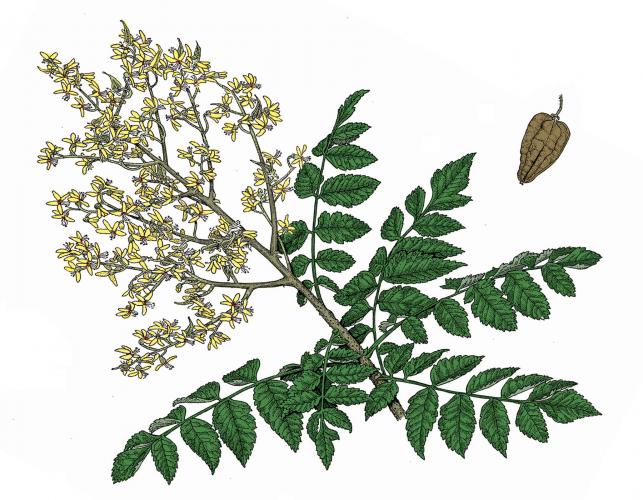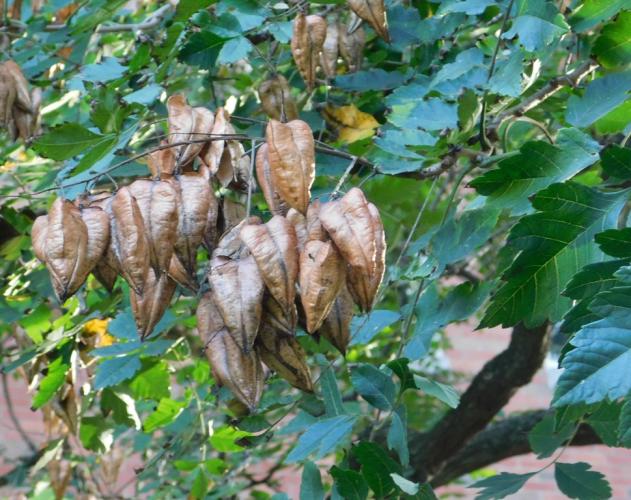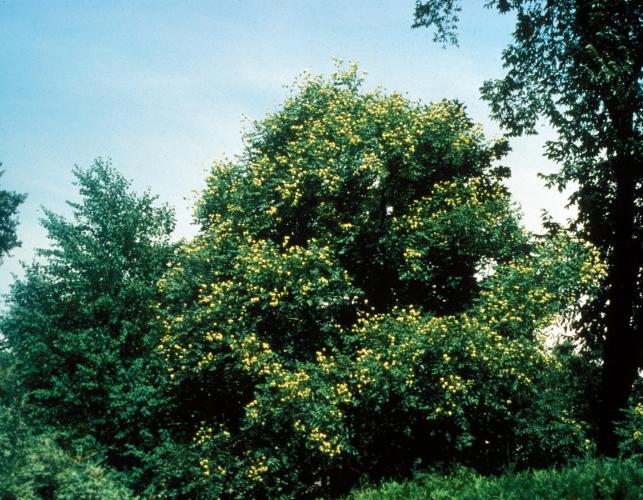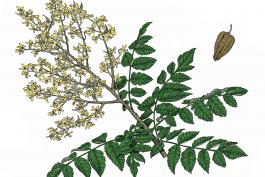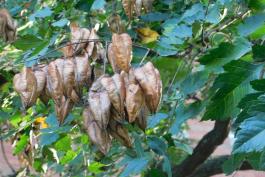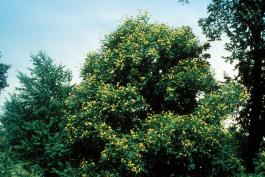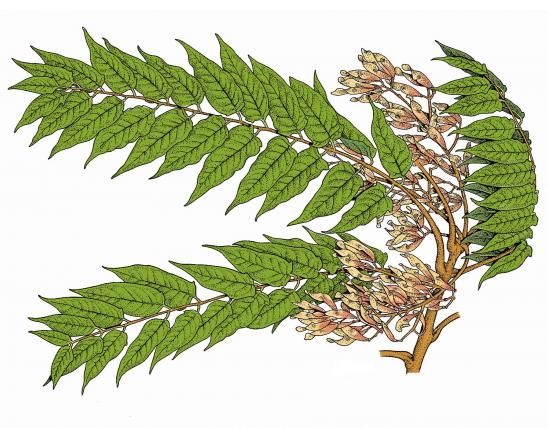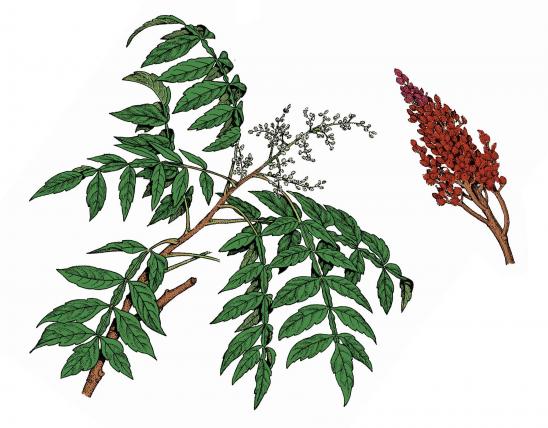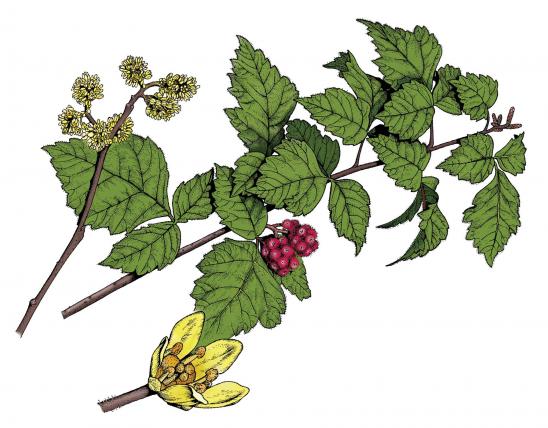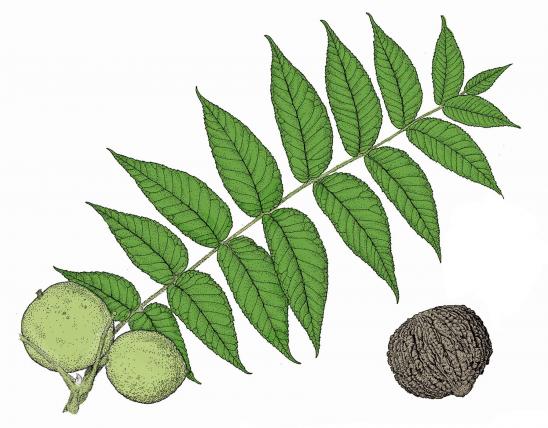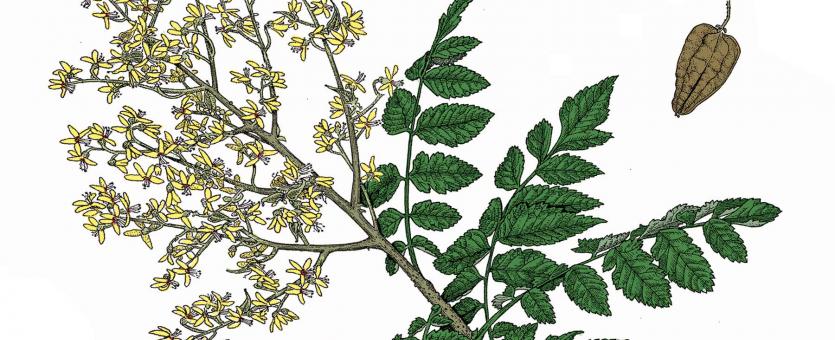
Golden rain tree is a small to medium-sized, fast-growing tree, developing a round head and wide spread.
Leaves are alternate, feather-compound (sometimes the larger, middle leaflets are themselves compound), to 18 inches long; each leaf has 7–17 leaflets that are irregularly lobed and deeply toothed; emerging leaves are bronze, pinkish, or purplish; autumn leaves are dull yellow.
Bark is light grayish-brown, becoming ridged and furrowed.
Flowers June–July, in large, showy, stalked clusters of small yellow flowers; the falling flowers, which can form a carpet under the tree, inspired its common name.
Fruits are inflated, papery, 3-parted capsules, 1¼– 2½ inches long, that somewhat resemble Chinese lanterns. Green at first, they turn brown and persist through fall and winter.
Note: There are several cultivars available through the nursery trade, and these differ slightly in some characteristics. Because it is invasive, it is not recommended for planting.
Height: 30–40 feet; spread 30–40 feet.
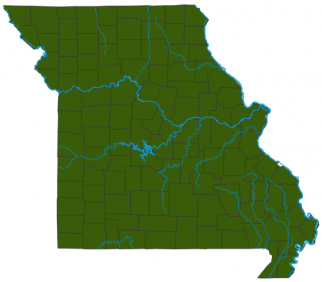
Was planted statewide, often in urban and suburban settings. It escapes cultivation, but most individuals are found near human-developed areas.
Habitat and Conservation
Native to China, Korea, and Japan, this tree was introduced to the West in 1747. It was especially popular in urban landscaping because it adapts to many climatic conditions, tolerates many soil types, endures air pollutants, has few pests, requires little care, and often recovers after severe winters. Its seeds germinate readily, however, and it becomes a pest. In Missouri and elsewhere in our country, it is considered invasive.
Status
This tree reseeds itself readily and can be weedy, and it has become such a nuisance Missouri and elsewhere that it has been declared invasive. Please do not plant this tree. There are many interesting and hardy native alternatives. The name is variously spelled goldenrain tree, golden raintree, and goldenraintree.
Human Connections
In America, it has been planted as a small shade tree, a street tree, and in lawns and terraces, but its invasiveness makes it a poor choice. In its native China, Japan, and Korea, it is a favorite tree to plant at the graves of prominent people and on the grounds of holy sites.
Ecosystem Connections
As an invasive species, this tree is decidedly hurtful to the environment. Invasive species tend to crowd out and overwhelm native species. But like most other trees, it provides shelter and food for many organisms; in cities, they help purify air and water.
